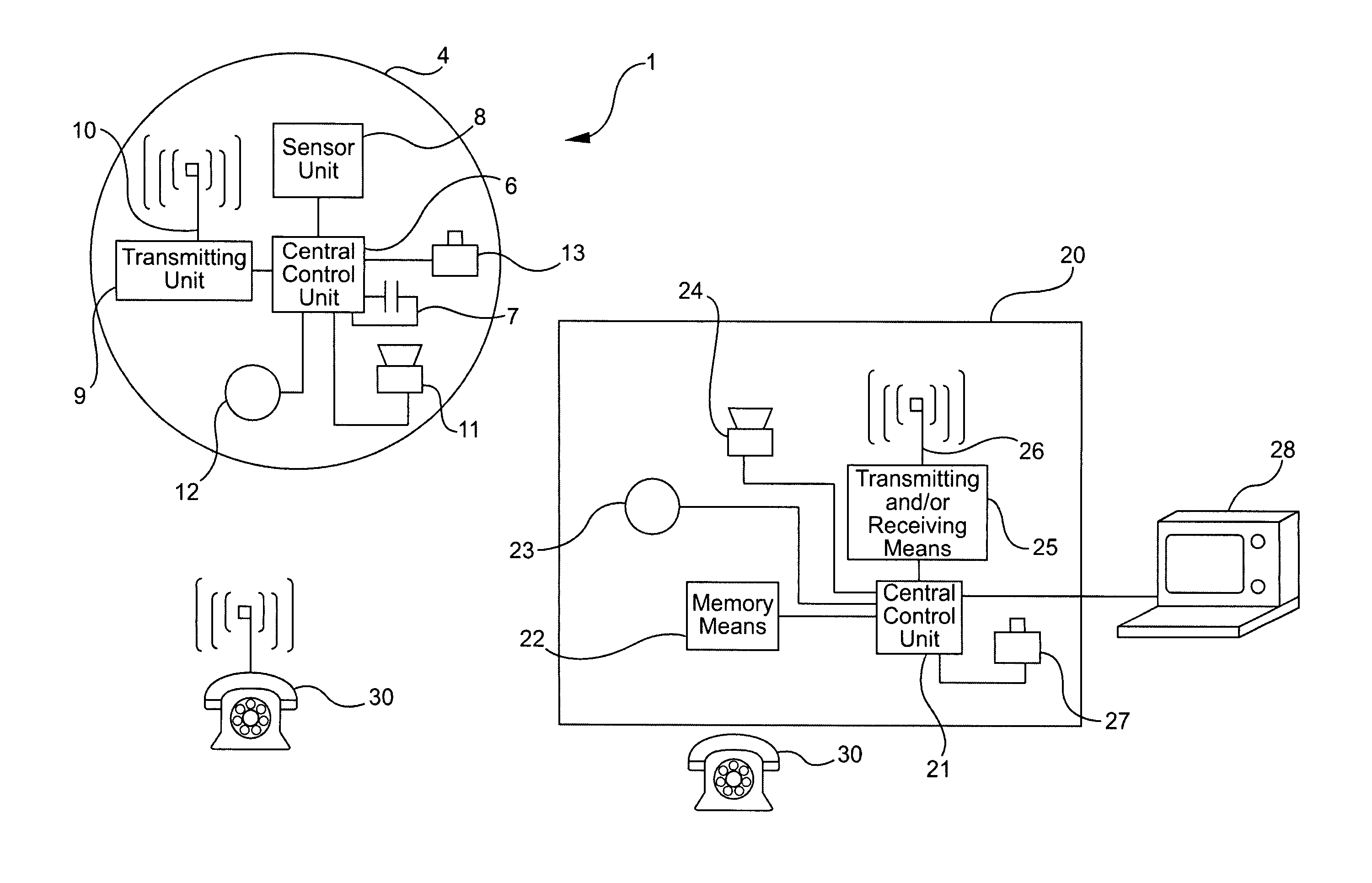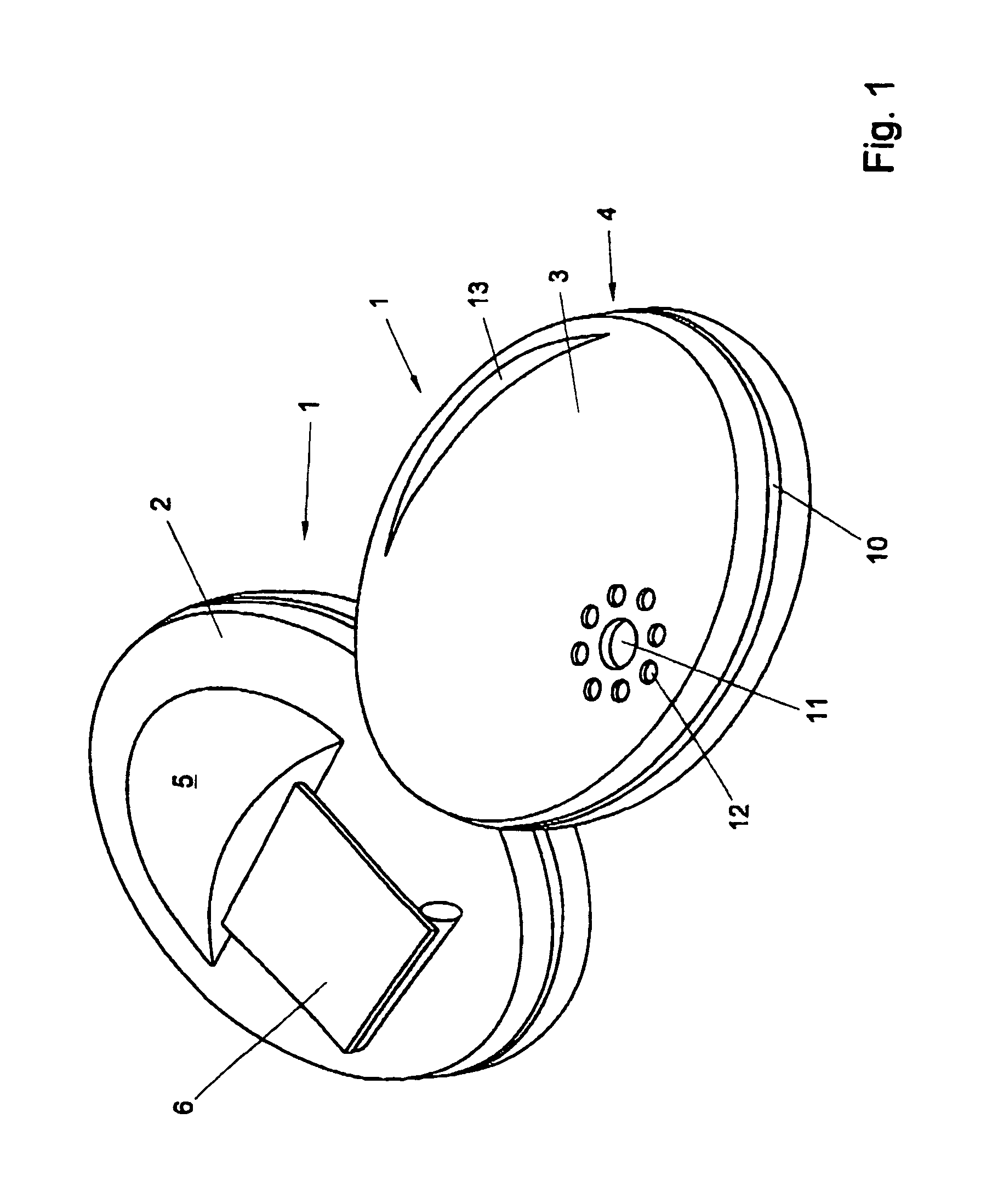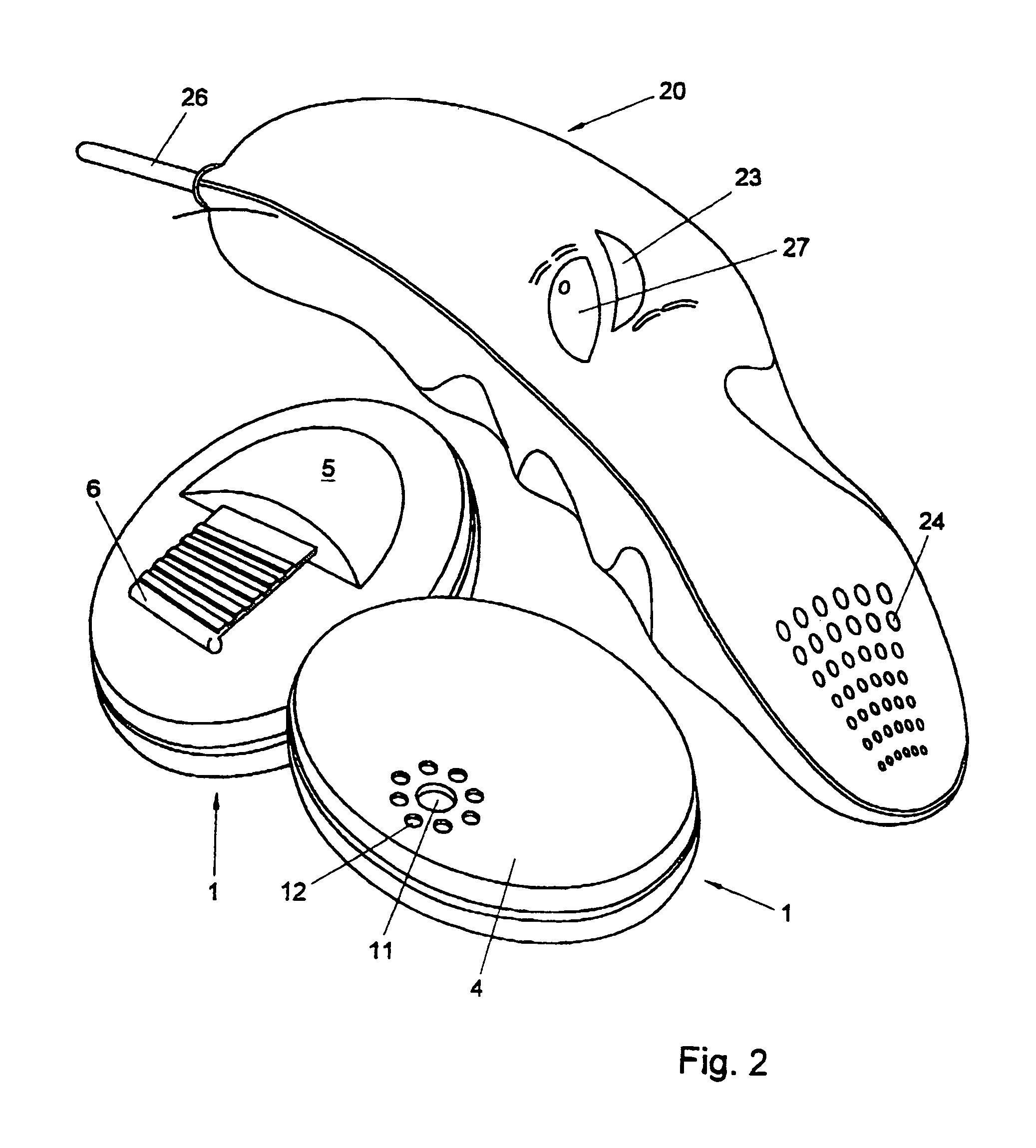Method and apparatus for registering movement patterns of human beings
a technology of human movement and movement pattern, applied in the field of human movement pattern registration, can solve the problems of reducing the physical and mental pressure of the care giver, affecting the care of patients, and affecting the quality of life of patients, so as to reduce the physical and mental pressure on the care giver.
- Summary
- Abstract
- Description
- Claims
- Application Information
AI Technical Summary
Benefits of technology
Problems solved by technology
Method used
Image
Examples
first embodiment
[0057]FIG. 5 shows a sensor 40, which comprises a base plate 41, for instance a portion of the housing 4 of a sensor part 1, on which base plate 41 a carrier 42 is arranged, on which, on the side remote from the base plate, a first end 43 of a strip-shaped carrier 44 is fixedly mounted. The second end 45 of the carrier 44 can move freely and has been weighted with a weight 46. Provided on the carrier 44, between the first end 43 and the second end 45, is at least one strain gauge strip 47, with which displacements of the second end 45 relative to the first end 43 can be measured, as well as movements and accelerations. Such a movement sensor 40 is simple in construction, sensitive to movements, robust, and can be made of relatively small design. A number of such sensors can be combined for registering movements and accelerations in different directions. Also, several strain gauges 47 can be provided on the carrier, for instance with sensitivity directions that cross each other, so t...
second embodiment
[0058]FIG. 6 shows a sensor 140, again comprising a base plate 141 which, via a bent arm 148, carries a rotatable disc 149. The disc 149 extends, for instance, in a plane at right angles to the base plate 141 and is rotatably suspended from the arm 148 in its center 150. On one side of the center 150, the disc 149 is weighted by a weight 146, such that when the plane of the disc 149 includes an angle with the horizontal, the weight will cause the disc 149 to rotate, such that the weight ends up centrally under the center 150. This is a preferred position of the disc 149. Below the weight 146, an opening 151 is provided in the disc 149, through which a light ray 152 of an optocoupler 153 can pass when the disc 149 has been brought into the preferred position mentioned. With the aid of the optocoupler, therefore, the preferred position of the disc 149 can be detected. If the movement sensor is moved, the disc 149 will rotate, which will be detected by the optocoupler since the light r...
third embodiment
[0060]FIG. 7 shows a movement sensor 240 according to the invention, which, in the embodiment shown, consists of a tubular element 255, in which a ball-shaped element 256 is movably confined, such that this element 256 can move freely between the two ends of the tubular element 255. Arranged at one end 257 of the tubular element 255 are a number of electrically separated contacts 258, 259, which communicate with the central unit 6 of the sensor part 1. When the ball-shaped element 256 engages the two contacts 258, 259, these are conductively connected, so that an electrical circuit is closed and the intended position of the ball-shaped element is defined. Upon movement of the sensor part 1, the ball-shaped element 256 will move in the tubular element 255, thereby alternately enabling and non-enabling electrical conduction between the contacts 258 and 259. Consequently, movements and accelerations can be simply detected.
[0061]In the case of a sensor as shown in FIG. 7, naturally diff...
PUM
 Login to View More
Login to View More Abstract
Description
Claims
Application Information
 Login to View More
Login to View More - R&D
- Intellectual Property
- Life Sciences
- Materials
- Tech Scout
- Unparalleled Data Quality
- Higher Quality Content
- 60% Fewer Hallucinations
Browse by: Latest US Patents, China's latest patents, Technical Efficacy Thesaurus, Application Domain, Technology Topic, Popular Technical Reports.
© 2025 PatSnap. All rights reserved.Legal|Privacy policy|Modern Slavery Act Transparency Statement|Sitemap|About US| Contact US: help@patsnap.com



